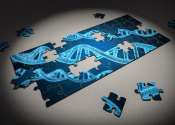Mathematics meets biology to uncover unexpected biorhythms
A novel mathematical approach has uncovered that some animal cells have robust 12-hour cycles of genetic activity, in addition to circadian or 24-hour cycles. The method, published in the journal PLOS ONE, assessed the periodicity ...




